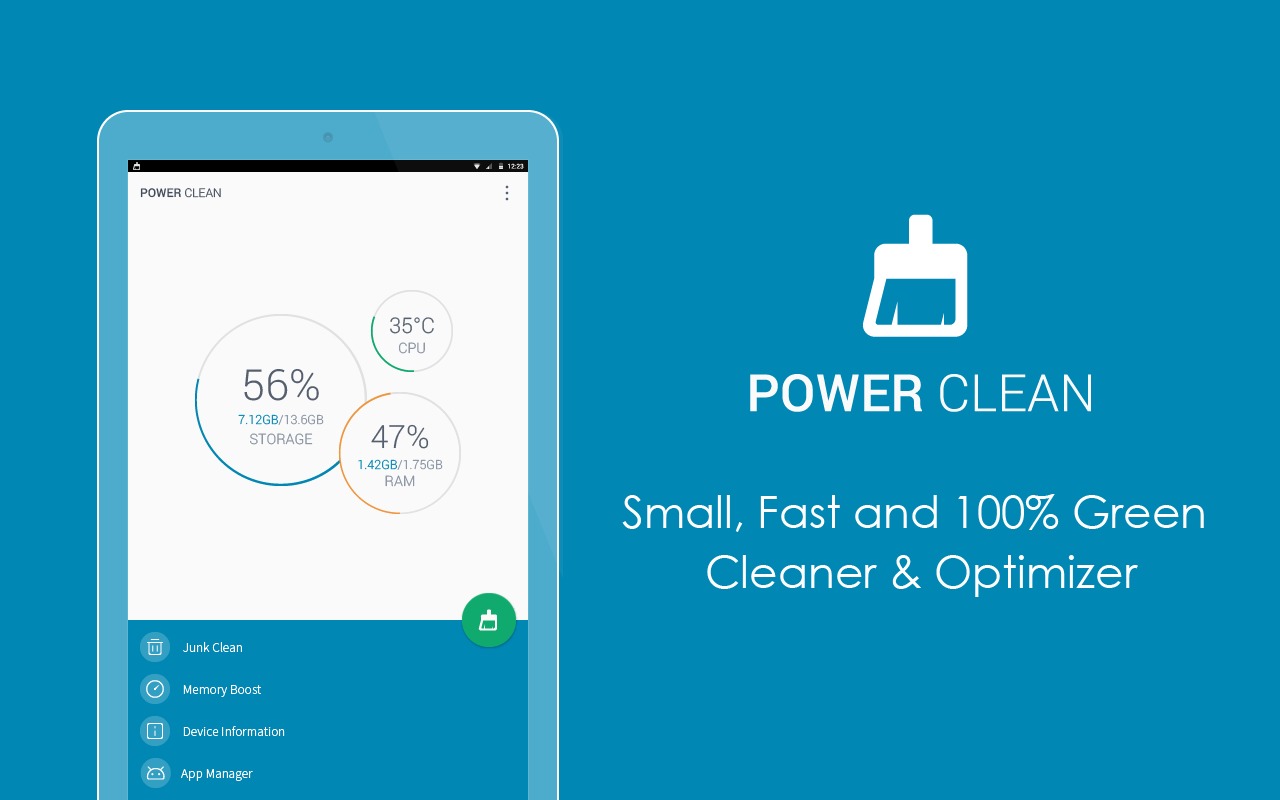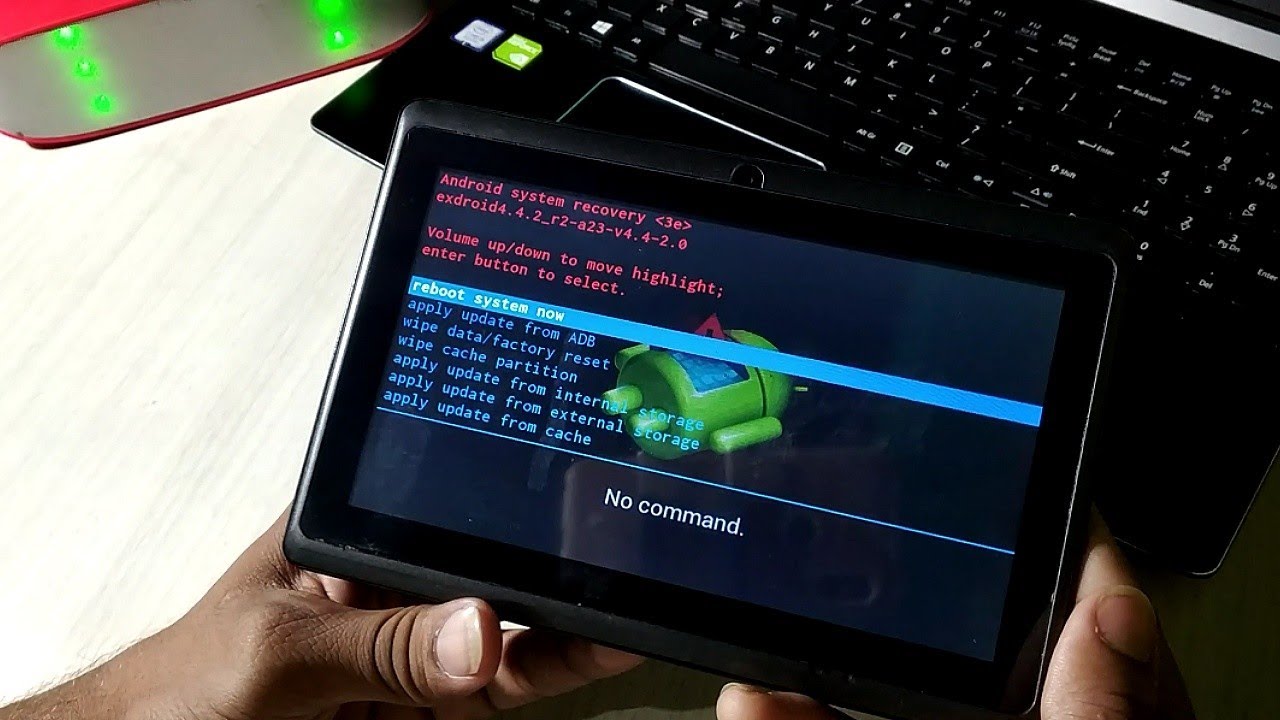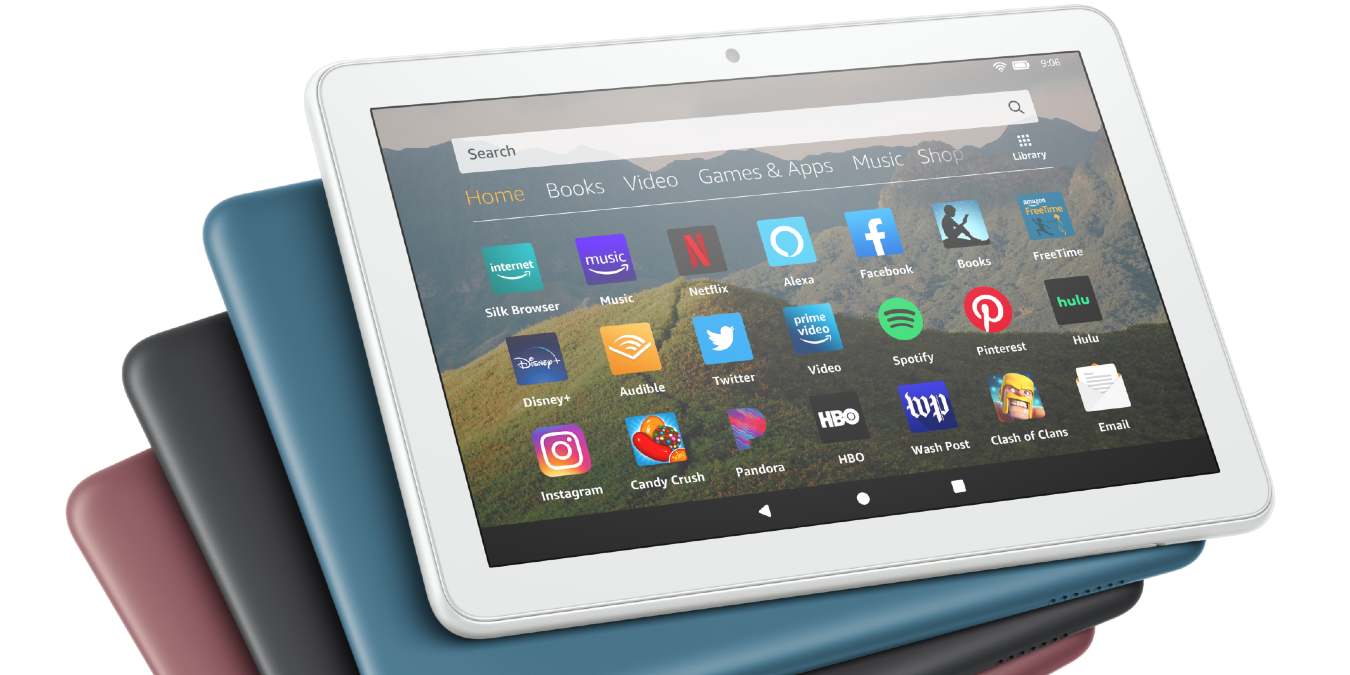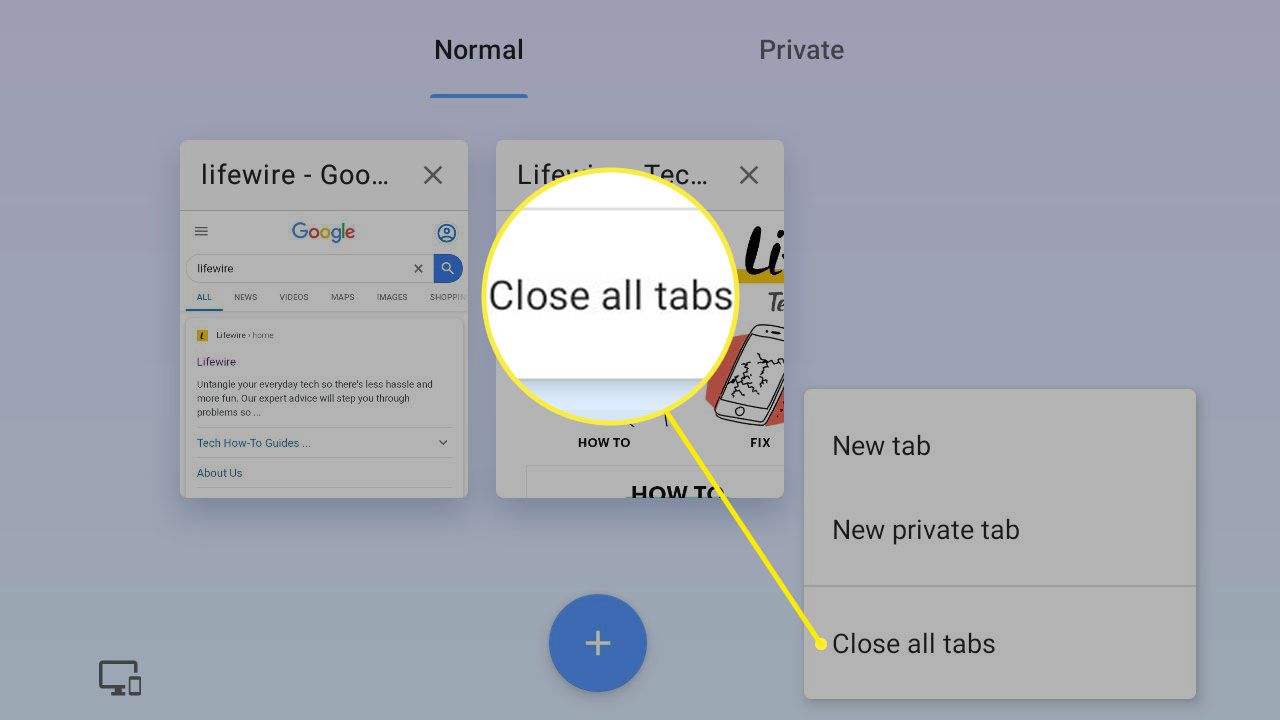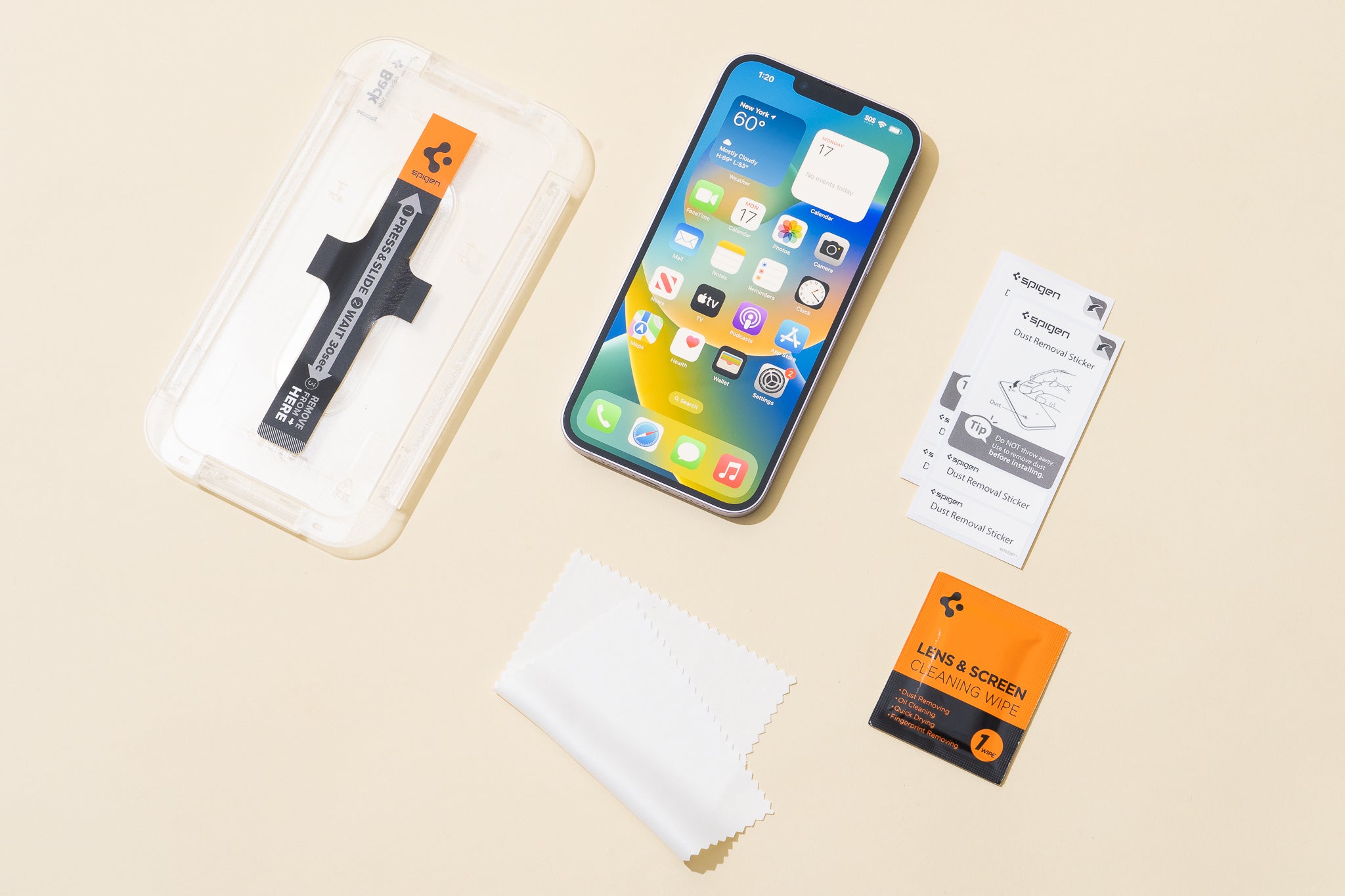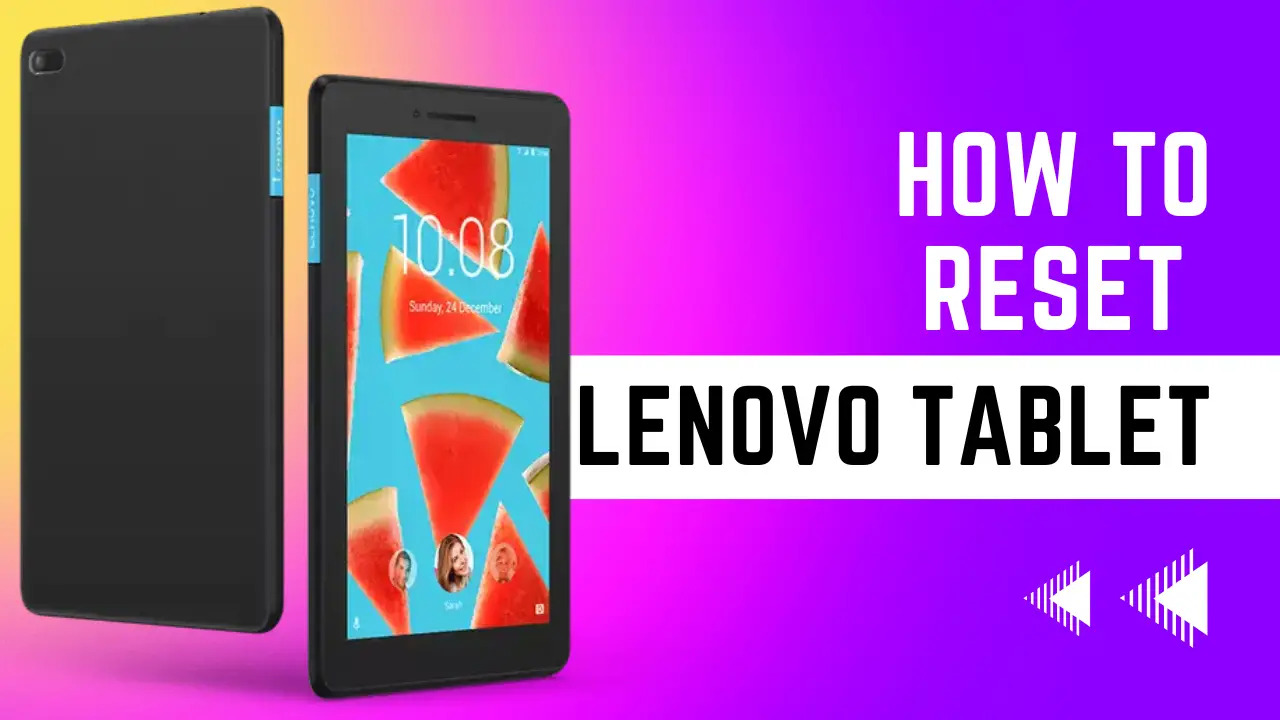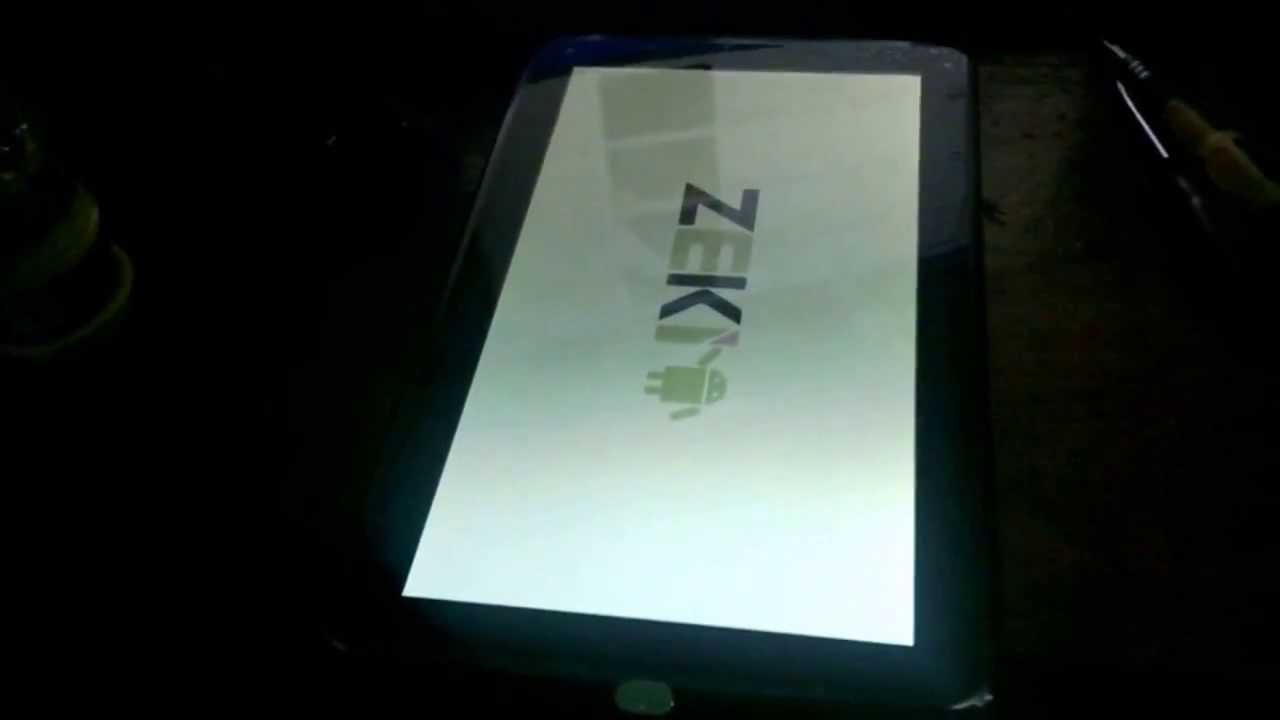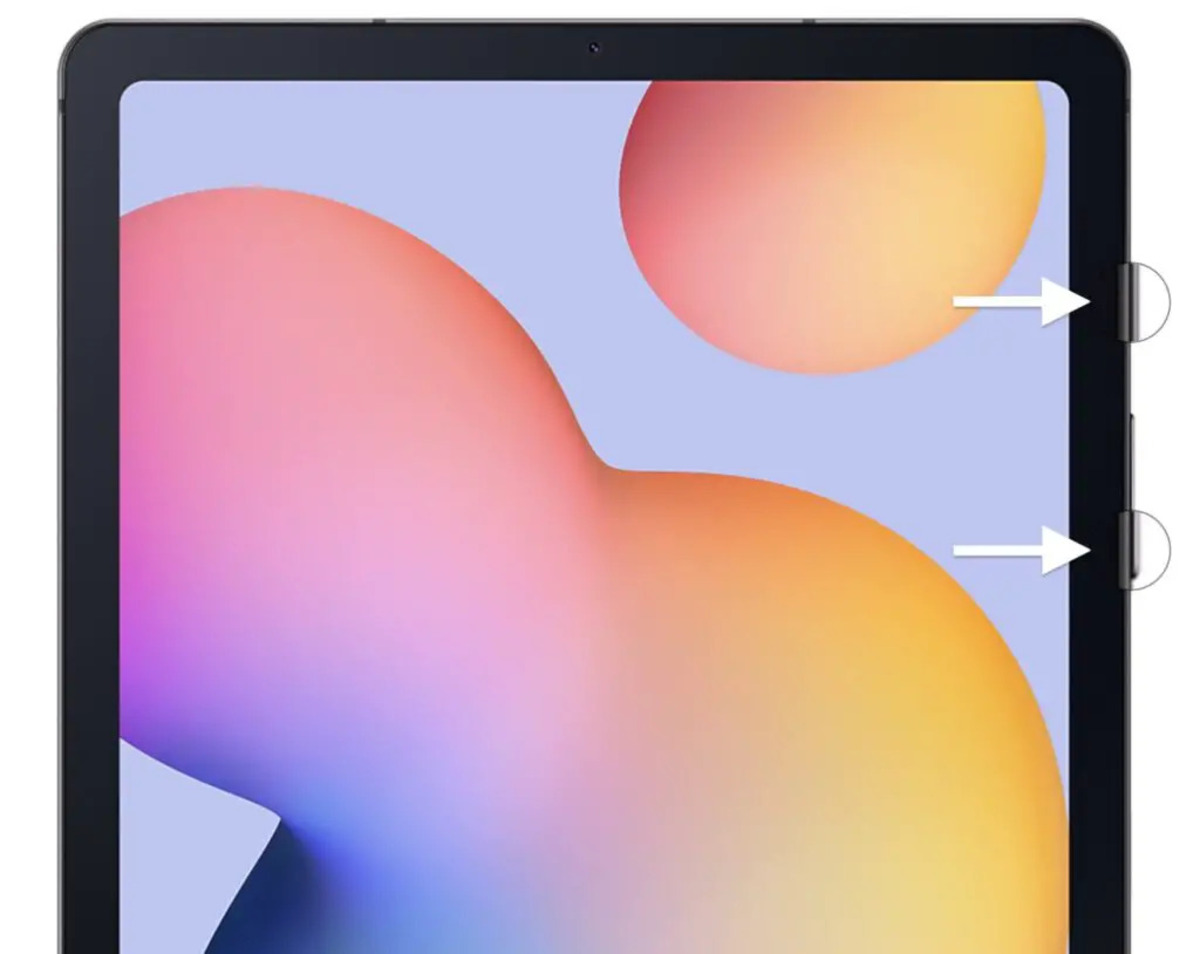Introduction
Keeping your Android tablet clean and organized is essential for optimal performance and usability. Over time, your tablet may become cluttered with unnecessary apps, junk files, and notifications, leading to slower performance and a frustrating user experience. Luckily, there are several simple steps you can take to clean up your Android tablet and ensure it runs smoothly.
In this article, we will guide you through the process of cleaning up your Android tablet, step by step. From removing unnecessary apps to clearing cache files, organizing your home screen, and managing storage, we will cover all the essential techniques to keep your tablet tidy and optimized.
A clutter-free tablet not only enhances its speed and responsiveness but also makes it easier to find and access the apps and files you need. By following these cleaning tips, you can reclaim valuable storage space, improve performance, and enhance your overall tablet experience.
Whether you’re a casual user dealing with a sluggish tablet or a power user looking to optimize every aspect of your device, this guide will provide you with the necessary steps to clean up your Android tablet effectively.
So, let’s dive in and learn how to declutter and revitalize your Android tablet, making it feel like new again!
Step 1: Remove Unnecessary Apps
The first step in cleaning up your Android tablet is to remove any unnecessary apps. Over time, you may accumulate a collection of apps that you no longer use or need, taking up valuable storage space and potentially impacting your device’s performance. By uninstalling these apps, you can free up storage space and streamline your tablet’s functionality.
To remove apps, go to your tablet’s Settings and find the “Apps” or “Applications” section. Here, you will see a list of all installed apps on your device. Scroll through the list and identify the apps that you no longer need. Tap on an app to open its information page, and then select the “Uninstall” button to remove it from your tablet.
When deciding which apps to uninstall, consider their usage frequency and whether they serve any purpose in your daily activities. Games, social media apps, and other large applications that you rarely use can be good candidates for removal.
Additionally, be cautious when uninstalling system apps or apps that came pre-installed on your tablet. Some of these apps may be essential for the proper functioning of your device. If you are unsure about a particular app, it’s best to do some research or seek advice before uninstalling it.
By removing unnecessary apps, you not only declutter your tablet but also improve its performance and battery life. It’s like decluttering your physical space – you’ll have more room to breathe and move around.
Remember, regularly reviewing and uninstalling unnecessary apps is an important maintenance practice. It will not only declutter your tablet but also make it feel faster and more responsive.
Step 2: Clear App Cache
As you use various apps on your Android tablet, they accumulate temporary files and data, known as the app cache. Over time, this cache can grow and take up a significant amount of storage space, impacting your tablet’s performance. Clearing the app cache regularly can help improve the speed and responsiveness of your device.
To clear the app cache, go to your tablet’s Settings and find the “Apps” or “Applications” section, similar to the previous step. From the list of installed apps, select an app that you want to clear the cache for. On the app’s information page, you will find the option to “Clear Cache”. Tap on this option to remove the temporary files associated with the selected app.
You can repeat this process for other apps on your tablet, especially those that you use frequently or that seem to be taking up a significant amount of storage space. Keep in mind that clearing the cache will not delete any app data or settings. It will simply remove temporary files and improve the app’s performance.
Clearing the app cache periodically is a good habit to maintain the overall health of your tablet. It not only helps free up storage space but also ensures that the apps you use are running smoothly and efficiently. By doing this, you may notice faster app launches, reduced lag, and an overall snappier user experience.
If you’re concerned about losing any important data, it’s always a good idea to back up your tablet before clearing the app cache. This way, you can have peace of mind knowing that your important files are safe while you optimize your tablet’s performance.
By regularly clearing the app cache, you can keep your Android tablet running at its best and avoid any slowdowns caused by a buildup of unnecessary data. It’s a simple yet effective way to optimize your device and ensure that you’re getting the most out of it.
Step 3: Organize Home Screen
Your home screen is the gateway to all the apps and functions on your Android tablet. A cluttered and disorganized home screen can make it difficult to find what you need and can also have a negative impact on your productivity. Taking the time to organize your home screen can greatly improve your tablet’s usability and make navigating through apps a breeze.
Start by removing any unnecessary icons or widgets from your home screen. Long-press on an icon and drag it towards the “Remove” or “Delete” option that appears on the screen. This will remove the icon from your home screen without uninstalling the app itself. This step will help you declutter your home screen and make room for important apps that you use frequently.
Next, consider grouping similar apps into folders. Long-press on an app icon and drag it onto another app icon. This will create a folder and automatically group the apps together. You can customize the folder by giving it a name that represents the category of apps it contains. For example, you can create a folder for Social Media apps or Productivity apps.
In addition to organizing apps, you can also customize your home screen with widgets. Widgets provide quick access to important information or functionalities from different apps, such as a weather widget or a calendar widget. Long-press on an empty area of your home screen, select “Widgets,” and choose the desired widget to add it to your screen.
Arrange your apps and folders in a logical and intuitive way that suits your preferences. Consider placing the most frequently used apps on your home screen, while less frequently used apps can be placed on secondary screens or within folders. This will make it easier to access the apps you need quickly and efficiently.
Remember, a clean and organized home screen will not only improve your productivity but also offer a visually pleasing experience every time you use your tablet. Take some time to customize and arrange your home screen according to your preferences, and you’ll notice how much easier it is to navigate through your apps and find what you need.
Step 4: Delete Junk Files
Over time, your Android tablet accumulates various junk files, such as temporary files, cached images, and residual data from deleted apps. These files not only take up valuable storage space but can also slow down your tablet’s performance. Deleting these unnecessary files can help improve your tablet’s speed and free up storage space for more essential files and apps.
To delete junk files, there are several apps available on the Google Play Store that specialize in cleaning and optimizing Android devices. One popular option is CCleaner, which can scan your tablet for unnecessary files and help you remove them efficiently. Install a trusted cleaning app of your choice and follow the instructions provided.
When using a cleaning app, you will typically have the option to analyze your tablet for junk files. The app will scan your device and identify the files that can be safely deleted. Review the results and ensure that you are comfortable deleting the suggested files before proceeding.
In addition to using a dedicated cleaning app, you can manually delete junk files from your tablet as well. This can be done by going to your tablet’s Settings and finding the “Storage” or “Storage and Memory” section. Here, you will see a breakdown of the different types of files taking up space on your device.
Select the option to clear cache files, temporary files, or any other junk files listed. This action will delete the identified files, freeing up storage space. However, exercise caution when manually deleting files, as deleting the wrong files can lead to unintended consequences.
Cleaning out junk files regularly is an important step in maintaining your Android tablet’s performance and overall functionality. By removing unnecessary files, you can optimize your tablet’s storage capacity and ensure that it runs smoothly, providing you with a seamless user experience.
Remember to schedule regular cleaning sessions to keep your tablet clutter-free and performing at its best. This will not only enhance the speed of your tablet but also extend its lifespan, allowing you to enjoy it for years to come.
Step 5: Manage Storage
Managing storage on your Android tablet is crucial for maintaining its performance and ensuring you have enough space for your apps, files, and media. By keeping your device’s storage organized and optimized, you can prevent it from becoming cluttered and slow. Here are some tips to help you effectively manage storage on your Android tablet.
First, go to your tablet’s Settings and find the “Storage” or “Storage and Memory” section. Here, you will see a breakdown of the different categories of files taking up space on your tablet, such as apps, images, videos, and documents. Review each category to determine which files are consuming the most storage.
If you find that certain apps or files are occupying a significant amount of space, consider deleting or moving them to an external storage device, such as an SD card or cloud storage. For apps, you can uninstall those that you no longer use or backup important data and then remove the app itself.
Next, take advantage of cloud storage services, such as Google Drive or Dropbox, to store your files and media. This will not only free up space on your tablet but also provide you with easy access to your files from any device with an internet connection.
Another effective way to manage storage is to regularly transfer your photos and videos to your computer or an external hard drive. This ensures that you have a backup of your precious memories while clearing up space on your tablet.
Consider using streaming services for music and videos instead of storing them directly on your tablet. Services like Spotify, Netflix, and YouTube allow you to access a vast library of content without needing to download the files to your device.
Lastly, regularly review and delete unnecessary files, such as old downloads or cached data from apps. These files can accumulate over time and take up valuable space on your tablet. Remember to exercise caution and only delete files that you are certain you no longer need.
By effectively managing storage on your Android tablet, you can optimize its performance, avoid storage-related issues, and ensure you have enough space for new apps and files. Make it a habit to regularly check and organize your storage, and you’ll enjoy a smoother and more efficient tablet experience.
Step 6: Remove Unused Widgets
Widgets are handy tools that provide quick access to app functions or display essential information on your Android tablet’s home screen. However, having too many widgets can clutter your home screen and negatively impact its performance. Removing unused widgets can help you declutter your screen and optimize your tablet’s resources.
To remove a widget, simply long-press on it until a menu appears. Drag the widget towards the “Remove” or “Delete” option that appears on the screen. The widget will be removed from your home screen, freeing up space for other widgets or app icons.
Take some time to review the widgets that you currently have on your home screen. Consider which widgets are no longer useful or necessary for your daily activities. Remove widgets that you rarely use or that provide redundant information already available through other apps or shortcuts.
Removing unused widgets not only reduces clutter but also improves the performance of your tablet. Each widget consumes system resources, such as CPU usage and memory. By reducing the number of widgets on your home screen, you can free up these resources, resulting in a more responsive and smooth user experience.
Furthermore, removing unused widgets can make your home screen visually appealing and less overwhelming. With fewer distractions, you can quickly locate the apps and information you need, enhancing your productivity and efficiency.
Remember, it’s okay to experiment with different widgets and customize your home screen to suit your preferences. But, it’s equally important to periodically review and remove any widgets that no longer serve a purpose. By keeping your home screen clean and focused, you’ll enjoy a more organized and enjoyable tablet experience.
Step 7: Update Apps
Keeping your apps up to date is essential for both security and performance reasons. App updates often include bug fixes, performance improvements, and new features that can enhance your overall experience. By regularly updating your apps, you ensure that you’re using the latest and most secure versions available.
To update your apps, open the Google Play Store on your Android tablet. Tap on the menu icon (three horizontal lines) in the top-left corner of the screen, then select “My apps & games.” Here, you will see a list of apps that have updates available. Tap on the “Update” button next to each app, or select “Update all” to update all your apps at once.
It’s a good practice to enable automatic updates for your apps. This way, your tablet will automatically download and install updates in the background, ensuring that you have the latest versions without having to manually update each app. To enable automatic updates, go to the Play Store settings and select “Auto-update apps,” then choose either “Over any network” or “Over Wi-Fi only” depending on your preference.
By updating your apps regularly, you not only benefit from improved performance but also protect yourself from security vulnerabilities. App developers frequently release updates to patch security flaws, so staying up to date minimizes the risk of malicious attacks on your tablet.
Additionally, updating your apps can introduce new features and enhancements that may enhance your app experience. Developers are constantly working to improve their apps and provide users with new functionalities and improvements. By staying updated, you can take advantage of these additions and enjoy a more seamless and enjoyable user experience.
Remember to periodically check for updates and ensure that all your installed apps are up to date. By doing so, you’ll have a more secure and reliable tablet experience, with access to the latest features and improvements that app developers have to offer.
Step 8: Clear Browser Cache
Over time, your browser cache can accumulate a significant amount of temporary files including images, scripts, and data from websites you’ve visited. Clearing your browser cache is essential for optimizing your tablet’s browser performance and ensuring you have the latest version of webpages you visit. Here’s how to clear the browser cache on your Android tablet.
First, open your preferred browser app on your tablet. Tap on the menu icon (usually three dots or lines) in the top-right corner of the screen to access the browser settings. From the menu, select “Settings” or “Privacy & Security” (the options may vary depending on the browser you use).
Within the settings, you’ll find the option to clear your browsing data. Tap on this option and select “Clear cache.” You can also choose to clear other types of data such as browsing history, cookies, or saved passwords, depending on your preference. It’s recommended to keep passwords and other important data intact unless necessary.
After confirming your selection, the browser will delete the temporary files stored in its cache. This process may take a few moments, depending on the size of your cache. Once completed, your browser cache will be cleared, and you’ll notice a potential improvement in browser performance.
Clearing the browser cache periodically is important for several reasons. Firstly, it helps free up storage space on your tablet by removing unnecessary files. This can be particularly beneficial if you’re running low on space. Secondly, clearing the cache ensures that you’re viewing the most updated version of webpages, as cached files can sometimes cause outdated content or compatibility issues.
It’s worth noting that clearing your browser cache may also log you out of websites you were previously signed into, so be prepared to sign back in if necessary. Additionally, clearing the cache will not delete your bookmarks or saved passwords, so you can rest assured that your browsing preferences and credentials will remain intact.
By regularly clearing your browser cache, you can ensure a smoother and faster browsing experience on your Android tablet. It’s a simple maintenance task that can make a noticeable difference in your overall browsing performance.
Step 9: Disable Unnecessary Notifications
Notifications are designed to keep you informed about important updates and events on your Android tablet. However, receiving excessive or unnecessary notifications can be distracting and disrupt your focus. Taking the time to manage and disable unnecessary notifications can greatly improve your tablet experience. Here’s how to do it.
To manage your notifications, go to your tablet’s Settings and find the “Notifications” or “Sound & notification” section. Here, you’ll see a list of apps that are currently allowed to send you notifications. Tap on an app to explore its notification settings.
Review each app’s notification settings and decide which notifications are necessary and which ones can be silenced. Some apps provide granular control over their notifications, allowing you to choose specific types of alerts or even disable them completely.
You can also prioritize notifications from certain apps that are more important to you. Android’s notification channels allow you to group similar types of notifications together and specify how they should be presented or silenced. This way, you can receive essential alerts while minimizing distractions from less important apps.
Furthermore, consider disabling notifications from apps that you rarely use or find unnecessary. For example, social media apps often send notifications for various activities, such as likes, comments, or friend requests. If these notifications aren’t crucial to your day-to-day activities, disabling them can help you regain focus and improve your productivity.
By disabling unnecessary notifications, you’ll reduce distractions, enhance your productivity, and have better control over which alerts demand your attention. It’s about curating your notification experience to align with your priorities and preferences.
However, keep in mind that notifications can serve useful purposes, such as reminders or important updates from apps you rely on. Be selective in which notifications you disable to ensure you don’t miss any critical information that you need.
Taking the time to manage your notifications can significantly improve your tablet experience, allowing you to stay focused and engaged in what matters most to you while minimizing unnecessary interruptions.
Step 10: Restart Your Tablet
Sometimes, your Android tablet may encounter minor issues or slowdowns that can be resolved by simply restarting the device. Restarting your tablet can help clear temporary system glitches, refresh system processes, and optimize performance. It’s a quick and effective way to give your tablet a fresh start. Here’s how to do it.
To restart your tablet, press and hold the power button until the power menu appears on the screen. From the power menu, select the “Restart” option. Your tablet will then shut down and automatically restart.
Alternatively, you can also perform a forced restart by pressing and holding the power button for about 10-15 seconds until the device turns off and then release the button. After a brief moment, press and hold the power button again to turn the tablet back on.
It’s a good practice to restart your tablet periodically, especially if you notice any performance issues, freezing, or lagging. Restarting your tablet can help clear temporary files, free up system resources, and potentially resolve minor software glitches that may be causing the issues.
Additionally, restarting your tablet can help refresh the system’s memory, leading to improved performance, responsiveness, and smoother operation. It’s like giving your tablet a quick “reset” to get it back on track.
Restarting your tablet is also beneficial after installing system updates or making significant changes to your device’s settings. It allows the changes to take effect fully and ensures a smooth transition to the updated or modified system.
By restarting your tablet regularly, you can maintain its optimal performance and resolve any minor issues that may arise. It’s a simple and effective way to give your tablet a fresh start and enjoy a smoother and more reliable experience.
Remember, restarting your tablet is a basic troubleshooting step that can often save you time and frustration. If you encounter persistent or serious issues with your device, it may be necessary to seek further assistance or consider more advanced troubleshooting methods.
Conclusion
Cleaning up and optimizing your Android tablet is essential for maintaining its performance, freeing up storage space, and ensuring a smooth user experience. By following the steps outlined in this guide, you can take control of your tablet’s performance and enjoy a clutter-free and efficient device.
Removing unnecessary apps, clearing app cache, organizing your home screen, deleting junk files, managing storage, removing unused widgets, updating apps, clearing browser cache, disabling unnecessary notifications, and restarting your tablet are all important steps in maintaining a well-functioning device.
Regularly reviewing and cleaning up your tablet allows you to reclaim valuable storage space, enhance performance, and optimize your tablet’s functionality. It also helps you stay up to date with the latest app features, security patches, and system improvements.
Remember to make these steps part of your regular tablet maintenance routine. Set aside some time every month or so to tidy up your tablet and ensure it remains in peak condition. By practicing these habits, you can extend the lifespan of your device and enjoy a seamless and enjoyable tablet experience.
Lastly, remember that every tablet and user is unique. Adapt these steps to your specific needs and preferences for the best results. Experiment with different settings and organizing techniques to find what works best for you and enhances your tablet experience.
Now that you have the knowledge and the tools to clean up and optimize your Android tablet, take action and start implementing these steps.
Keep your tablet clean, lean, and efficient – and enjoy the benefits of a well-maintained and high-performing device!







